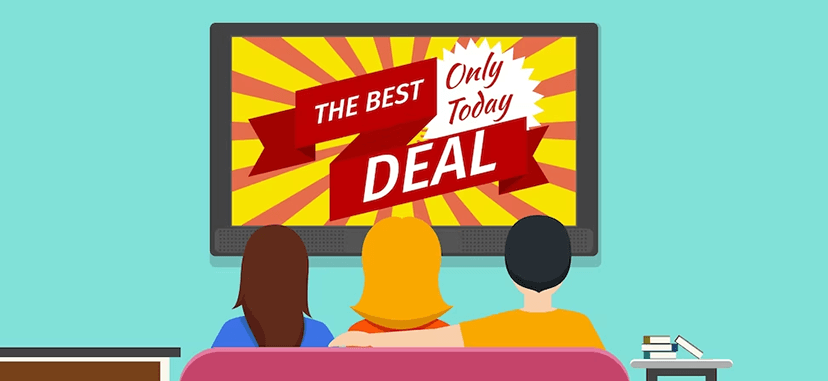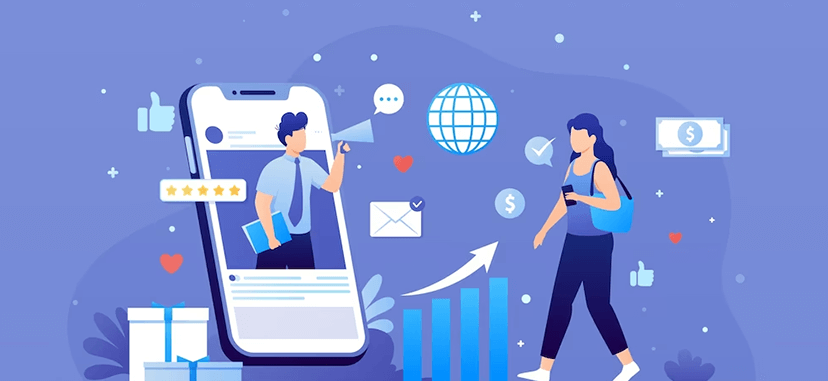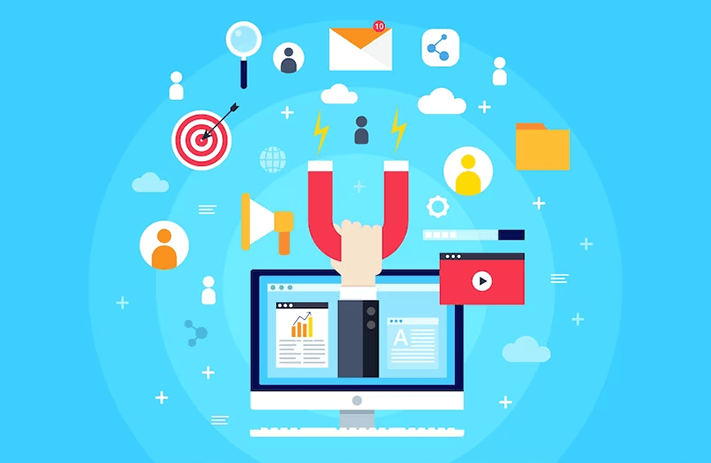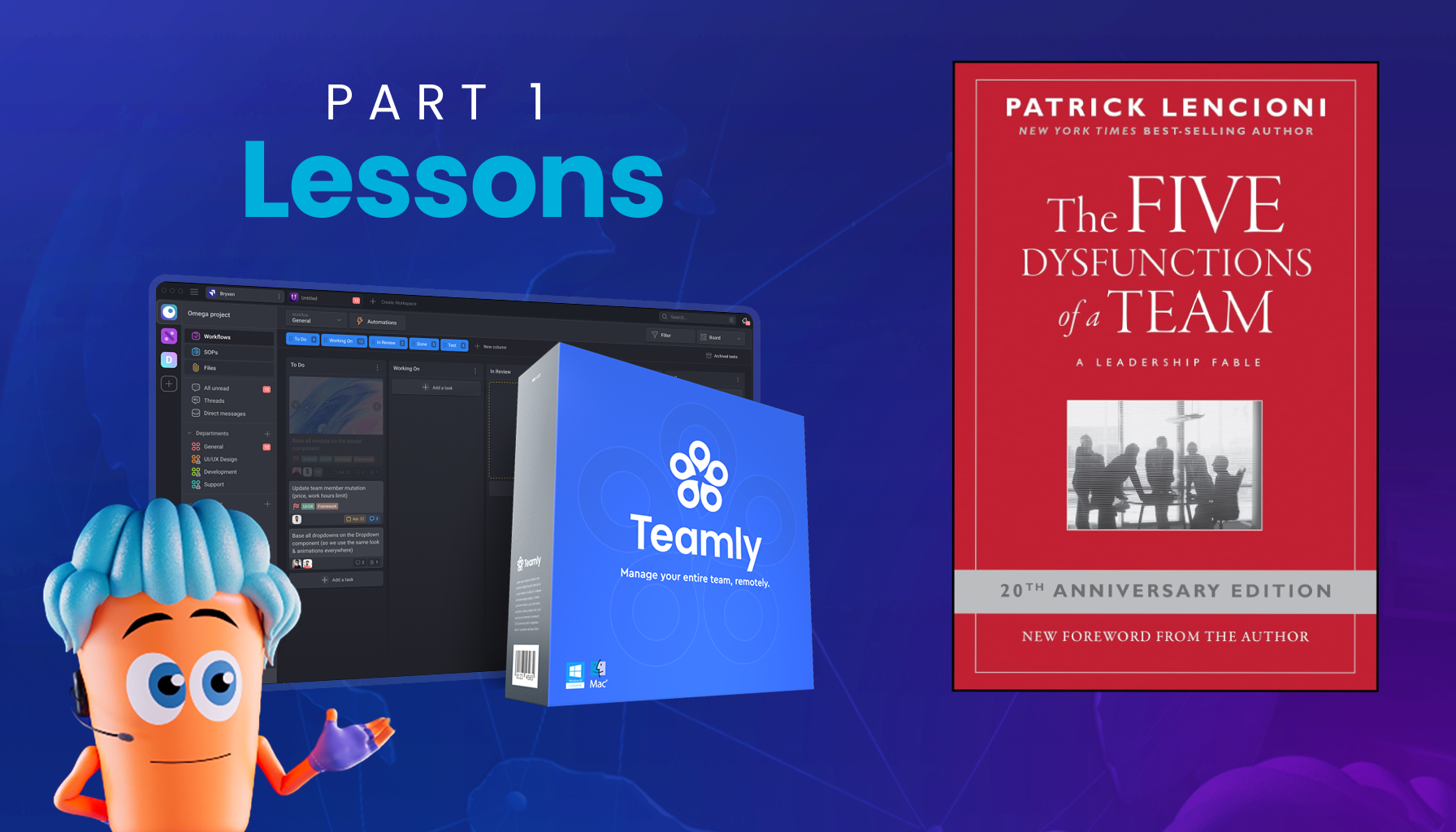
Click the button to start reading
A Smart Marketer’s Guide to Inbound vs. Outbound Marketing
Marketing used to be about billboards, TV ads, and cold calls. That is, until the 1990s, when marketing methods became more digital. And with a shift to digital has come a drastic transformation in how businesses market to potential clients. Rather than marketers having to reach a broad and non-targeted audience with their outbound marketing tactics, the Internet has allowed consumers to seek out products and services when needed. That means fewer geographic limitations and a complete change in how businesses position themselves. This more inbound approach to marketing is bigger than ever.
But what’s the actual difference between inbound marketing vs. outbound marketing? In this article, we’ll be explaining some of the key differences, giving both inbound and outbound marketing examples and going into depth at the pros and cons of each marketing method so you can choose the right mix for your business.

What’s the difference between inbound vs. outbound marketing?
To understand what inbound vs. outbound marketing is, defining what each term means will be helpful.
Outbound marketing is when a business is proactive about reaching potential customers. It’s a more traditional form of marketing and may include TV ads, cold calls or emails, press releases, trade shows, seminars, direct mail, and media buys. Inbound marketing, on the other hand, is about creating discoverable content that keeps people engaged. It goes beyond selling and instead focuses on providing value and nurturing relationships.
The critical difference between marketing that’s outbound vs. inbound is how the business engages with customers. Outbound is proactive, while inbound is about nurturing qualified leads.
Outbound Marketing in Depth
Outbound marketing is what most people think of when they think of marketing. As mentioned above, it uses more conventional marketing methods like ads and print. It’s a more aggressive and direct form of selling where the goal is to reach as many people as possible. That said, there are pros and cons associated with outbound marketing.
Outbound Marketing Examples
- TV ads
- Cold calls or cold emails
- Press releases
- Trade shows, conferences, seminars
- Direct mail
- Posters, flyers, billboards
- Media buys
Pros of Outbound Marketing
- It’s the traditional form of marketing. Outbound marketing is the Super Bowl ads, the mail catalogs, and the subway poster. It’s the most established kind of marketing, meaning there’s a well-defined framework for how it works. When creating an outbound marketing campaign, you’ll find many tools, tips, and best practices that make it easier than inbound marketing. This is because customers are used to encountering this type of advertising in their day-to-day. They expect to see it and know how to interact with it.
- It’s better for brand awareness. Outbound marketing is a critical part of building brand awareness. It’s how every major brand – from Coca-Cola to Ford – has become a household name. Outbound marketing tends to be more aggressive, but tuning out is also getting easier. For example, you probably won’t notice a billboard you drive past daily. But there’s an argument to be made that subtle, repetitive exposure builds brand awareness. And by the time you need that product or service, you might be able to recall that brand and have some loyalty, trust, or other incentive to buy from them.
- It’s good for luxury or big box brands. Most luxury or big-box brands use outbound marketing as part of their marketing strategy. Why? Because in both cases, there’s either a very high or very low barrier to purchase. With luxury products, customers will need repeated exposure to feel confident making the significant investment. Outbound marketing helps it seem like this product is everywhere, known by everyone, and that having it would indicate some status. On the other hand, with big box brands, purchases are small and easy. They typically sell a range of products, and the goal is to constantly remind customers that they’re the go-to for day-to-day purchases.
- It produces more immediate and obvious outcomes. While tracking the impacts of outbound marketing is challenging, it’s much more immediate than inbound marketing. For example, a podcast ad is running, or it’s not. You can see immediately how many people received your cold email. Inbound marketing, on the other hand, takes time, effort, and continual maintenance, making it more of a long-term strategy. On another note, since outbound marketing is more aggressive and direct, it’s more likely to result in immediate sales than an inbound marketing strategy.
- It helps you reach an audience that’s not digitally native. While there’s been a massive shift to digital, inbound marketing for younger generations, there’s still a generation that is not digitally native. By adopting an entirely inbound strategy, you might miss out on how older people get information and make purchase decisions. If your product or service is helpful for a wide range of clients – including older people – consider a mix of inbound and outbound marketing to ensure you capture people where they are.
Cons of Outbound Marketing
- It’s more difficult to measure. Perhaps the biggest challenge of outbound marketing is that it can be challenging to measure. While inbound marketing offers many trackable metrics (open rates, impressions, etc.), measuring how many people heard your radio ad or saw your flyer can be challenging. It can be even more difficult to attribute your sales to different marketing efforts later or know what’s working best for your business. To overcome this challenge, you might try focusing on a single outbound method at a time and then watching sales trends in the coming weeks and months before trying another.
- It’s more broad. The algorithms used by search engines and social media platforms make it easier to target consumers with the information they want when they are near purchase, like an Instagram ad for jewelry for someone recently searching for this on Etsy. But other types of outbound marketing – print or media spots – can’t be targeted in the same way. You might be able to narrow your audience by understanding your media partner’s viewership, readership, or typical client. But it’s harder to ensure that this customer will be looking for what you have to offer at that moment. For example, you might be able to run a billboard for your SaaS product on a commuter highway (relevant audience), but there’s no guarantee that they’ll be looking for your software at the time they see it.
- It’s becoming easier to block out and less effective. Paid subscriptions, ad blockers, and spam filters make it easier than ever for people to block out your outbound marketing efforts. Not only are people shifting away from some of the conventional places where outbound marketing was conducted – morning commutes, cable TV, the radio, etc. – but more sophisticated means of avoiding unwanted advertising are emerging. Additionally, people are inundated with marketing messages. They have easier access to the information on demand and are, therefore, less likely to respond positively to ads. It’s getting more challenging to reach people with outbound methods, which is why building healthy inbound marketing channels in preparation for this shift makes sense.
- It’s expensive. And finally, outbound marketing can be high cost. For example, billboards and television ads are costly investments, and there’s no guarantee they will increase your business’s sales. Many marketers are shifting to more digital outbound marketing, like emails and ads, which come at a lower cost or where cost is directly correlated with the campaign’s success.

Inbound Marketing in Depth
Inbound marketing is about creating discoverable content that will attract, engage, and delight potential clients. It’s a more subtle form of selling that relies more on building relationships than converting them immediately. Below are some examples of inbound marketing, along with some pros and cons.
Inbound Marketing Examples
- Workbooks and workshops
- Webinars
- Social media posts
- Blogs
- Videos
- Newsletters
- Infographics
Pros of Inbound Marketing
- It’s easier to measure. As inbound marketing is conducted mainly on social media platforms or your website, it can be much easier to measure the impact of your marketing efforts and understand how people are engaging with the content. It’s important to note that the effects of inbound marketing tend to be a bit less immediate than outbound marketing, so it’s better to measure based on engagement rather than conversions. Some marketing metrics you might consider are total impressions, time on site, likes or social shares, email signups, etc.
- It’s brand building. The content you create for inbound marketing has limitless potential. It can be engaging or interesting. Useful. It can help you differentiate yourself from your competition. Help establish you as a thought leader. Rather than ads that will quickly cycle through, an inbound marketing strategy allows you to create resources to help potential customers learn about your brand and stay engaged. Use your inbound marketing strategy as an opportunity to develop your brand with varied material and consistent messaging.
- It helps you reach a larger, more targeted audience. While outbound marketing often has geographic limitations, an inbound strategy can help expand your reach globally. When you create broadly interesting content, it’s possible to be discovered by prospective clients without regional, cultural, or language limitations. Your market size expands significantly if you have a product or service that’s not location limited. Another advantage of inbound marketing is that your prospective audience won’t only be larger but more qualified than you’d get from outbound marketing. Since they’re coming in through relevant content, there’s a better chance they’re already seeking out what you have to offer.
- It’s less expensive. At least it can be. Inbound marketing is often organic and highly tailored to the ideal client. Your inbound marketing strategy can be as simple as creating blog posts and social media posts (least expensive) or evolve into a more complex sales funnel supported by outbound marketing (more expensive). There are inbound marketing strategies of all sizes and scopes, and you can effectively build one around what you have to spend. This tends to be more grassroots and guerilla than, for example, paying for a TV ad where the required spend is fixed.
- It has more staying power. Another often overlooked advantage of inbound vs. outbound marketing is that the content you create has staying power. While a paid ad runs for a period and disappears when the budget runs out, content that grows organically has a longer lifetime value. It continues to be valuable and grow as long as you try to track it, update it, and keep it relevant to your potential clients.
Cons of Inbound Marketing
- It takes a lot of time and effort. While outbound marketing is more do it and leave it, inbound marketing requires more ongoing time and effort. And we’re talking not only about the effort to create the content but also to promote and optimize it. A successful inbound marketing strategy requires attracting your customers, converting them with an email or another next step, closing the lead, and then delight them once they’re your customers. When you skip or miss steps, you might lose people along the way rather than successfully walking them through your sales funnel. So giving this careful attention should be a part of any inbound marketing strategy.
- It’s competitive and hard to do well. So many business owners have been there. Invested tons of time in a webinar, workshop, blog post, video, or other resource, and then… crickets. Or perhaps you successfully promoted a piece of content but failed to bring those leads any further through your sales funnel. You got names and emails but no sales as a result. While inbound marketing is the future of marketing in many ways, it is still tough to do well. There are frameworks you can follow, but it’s not always so straightforward. It requires an intimate understanding of your ideal client and what they need. It often involves reworking things, creating new content, and improving your processes until you get it right. And since you’re up against some major players – well-established blogs, YouTube Channels, etc. – this can be a competitive and defeating process.

Is inbound or outbound marketing better for your business?
Now that you understand some pros and cons of inbound and outbound marketing, the question becomes: which is the proper method for your business?
There’s no easy answer, but the absolute best approach is a mix of both. Smaller businesses with fewer resources might focus on inbound marketing since it requires less upfront investment and is more targeted. Companies with bigger budgets and less time might make outbound marketing the bulk of their strategy.
Inbound and marketing work hand in hand. You might capture your leads with inbound marketing and switch to outbound methods to follow up with them. It can also work the other way around, where you first reach prospective customers with outbound marketing and nurture the relationship with your content. It’s not a one-size-fits-all approach and will require a bit of experimentation to come up with the mix that’s best for your company.
















